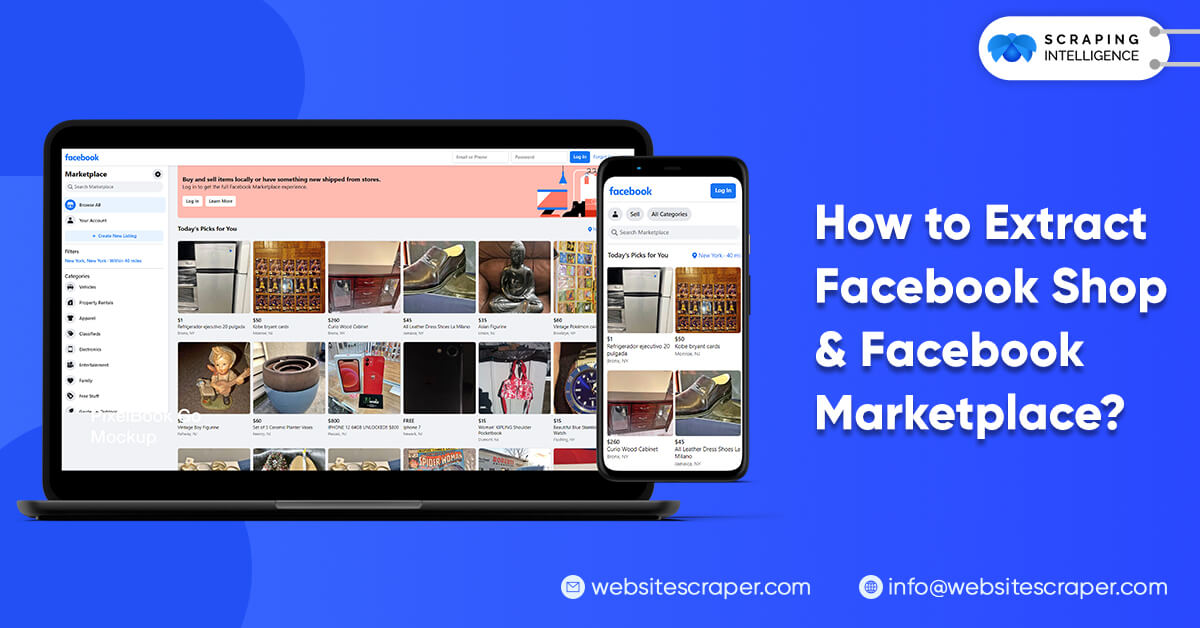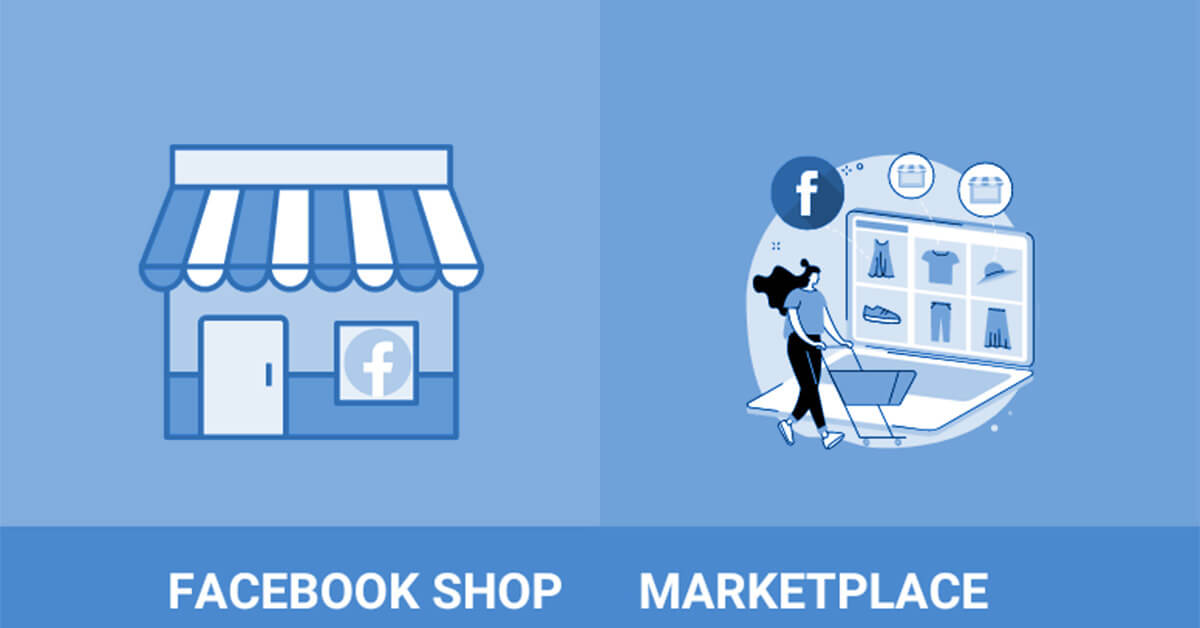
Over 200 million people shop on Facebook daily, with over 800 million users. Due to this, Facebook now offers a Shop and Marketplace for people who wish to sell or buy items. In addition to making their store visible to everyone, businesses can create more customized stores for specific groups.
We are here to show you how we pull data from Facebook Shop and Marketplace, which can help businesses in various ways. Accessing information sources is a crucial aspect of data analysis organizations. Getting the information you need through public databases is possible if unavailable online. It is especially true for the social network Facebook. To improve your business, why not use the data the organization collects from its users?
Fortunately, there are multiple methods for extracting and analyzing Facebook data. These social network pages contain a wealth of information that may be collected and organized in various ways, ranging from specific posts to individual likes or friends that use specific tags, among other things. This blog will review the platforms and how to get the correct data for analysis.
Understanding Facebook Shop & Facebook Marketplace

Facebook Shop is a platform where users can create stores and sell products. Its powerful features help users create public and private shops for different purposes. Facebook Marketplace is the same thing but with a few differences. Facebook shoppers can browse several shops without leaving the Facebook interface, where they can click on a specific product and buy it from the seller's page.
Now that we've got an idea of these functions let's look at how we can extract data from them.
Discovering Information on Facebook Shop & Facebook Marketplace
A thousand miles begin with a single step, so let's start with the most fundamental steps and only use publicly available data. First, we must look for information sources from which we may extract the data. To begin, we'll navigate to one of the shops' pages and see what information we can uncover in its profile.
You can see from this example how many fields contain particular information about the store: its name, products sold, hours of operation, number of followers as well as contact details. All this data is freely available to be downloaded if you know how to do it properly. Type of data that is available on these platforms:
Name
This is the store's name; you can find it in the top-right corner of a tab called "Website." There are also other names available such as Facebook Shop or Facebook Marketplace.
Products
Depending on what kind of shop it is, there will be more or less details about the products a store offers under "Products." It can be found throughout the page of every shop.
Hours Of Operation
Every shop has its opening hours; we can see them in the "About" section. This information is crucial because it will allow us to determine how long a business takes to respond to messages and orders.
Number of Friends / Number of Likers / Number of Followers
We can find all these details in the "About" section, but let's start with friends. The number of friends is listed under the name and photo of the store owner. The more friends a business has, the more popular it is (although this is only sometimes true). The number of likes looks at how many users liked that shop's posts and updates via clicking "Like.
The number of followers will show the number of users following and liking that shop. This is not precisely important as it's a figure of popularity that only tells us a little about the business, but it's still an exciting piece of data you can use in your analysis.
Contact Details
This is information that everyone has access to. If you want to contact a seller or business owner via Facebook Messenger, you may find this information in the "Contact" section, which contains all the relevant information.
About the Business
The "About" section provides extra information about the store. We can get information like its address, website address, and phone number here.
Contact Seller
Facebook Messenger is the greatest way to contact a merchant. Here you will find information such as the store owner's email address, username, and password to view their messages, whether they are public or private.
Extracting the Facebook Shop & Facebook Marketplace data with web scraping
Getting the correct data is critical to any project. We have seen how many fields are available on Facebook Shop or Facebook Marketplace pages – but there's always more than one way to extract data. For example, extracting favorites from a post differs from extracting a list of products the store owner sells or searching for friends that use specific tags in their posts (two ways to get more info about users).
Web Scraping is a process in which you take data from a website's source code and use it in any other platform. While getting the information from Facebook Shop or Facebook Marketplace can be simple, finding all the different information for each field is difficult. However, with scripts, data extraction becomes much more accessible and allows us to extract the correct data for our analysis.
Scraping Your Way to Better Results with Python

Python is an ideal language for scraping due to its simplicity and portability. It also has excellent tools that you can use to find out exactly what we need (or discover missing pieces of information).
To extract data from Facebook Shop and Facebook Marketplace using Python, you can utilize the Facebook Graph API. Here's an example code snippet that demonstrates how you can extract data from these platforms:
{
# Facebook API access token
access_token = ''
# Facebook Shop data extraction
def extract_facebook_shop_data():
shop_url = 'https://graph.facebook.com/v12.0//products'
# Send a GET request to the Facebook Graph API
response = requests.get(shop_url, params={'access_token': access_token})
if response.status_code == 200:
data = response.json()
# Process the data as per your requirements
# Extract the necessary information from the JSON response
# Example: Print the product names
for product in data['data']:
print(product['name'])
else:
print('Error occurred while retrieving Facebook Shop data.')
# Facebook Marketplace data extraction
def extract_facebook_marketplace_data():
marketplace_url = 'https://graph.facebook.com/v12.0/me/marketplace_items'
# Send a GET request to the Facebook Graph API
response = requests.get(marketplace_url, params={'access_token': access_token})
if response.status_code == 200:
data = response.json()
# Process the data as per your requirements
# Extract the necessary information from the JSON response
# Example: Print the item names
for item in data['data']:
print(item['title'])
else:
print('Error occurred while retrieving Facebook Marketplace data.')
# Call the functions to extract data
extract_facebook_shop_data()
extract_facebook_marketplace_data()
}
The above code snippet uses the Facebook Graph API to get data from Facebook Shop and Marketplace.
Conclusion
Facebook has been a popular social network for a long time. Since it makes its way into the world of e-commerce, Facebook Shop or Facebook Marketplace pages can give us some exciting insights about the e-commerce industry. By getting data from these platforms, you can learn more about how customers buy products and how they communicate with each other on this platform.







